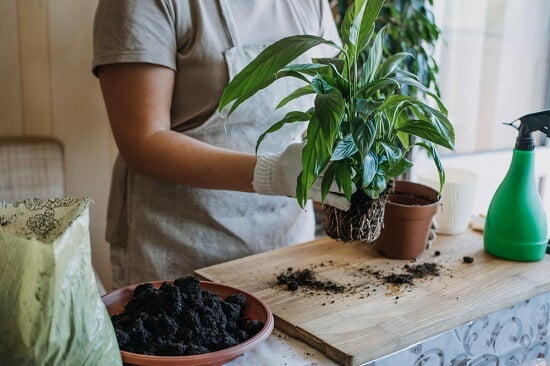If you’re seeing some of the following signs in your plants, it might mean they are root bound: stunted growth, wilting, discoloration, and a decrease in flowering or fruit production. When plants become root bound, their roots can no longer grow properly because they are too crowded. This can be a big problem, as it can ultimately lead to plant death. If you think your plants might be root bound, take action right away to remedy the situation! In this post, we will go over what it means by plant root bound, how it happens and what are some possible solutions.
What Does It Mean Plant Root Bound?
Plants are designed to grow in the ground and expand their roots, but humans frequently have other plans for them. Whether we’re growing a houseplant indoors or planting a container garden outside, plants frequently find themselves restricted when under our care. If a plant’s roots are not kept under control, they can become root-bound.
Many plant owners don’t know that their plant may be root bound until it’s too late. The telltale signs include stunted growth, wilting leaves or flowers, discoloration, and a decrease in flowering or fruit production. If your plant is showing any of these symptoms then there’s a good chance that its roots are growing outward instead of downward because they are too crowded. When plant roots become root bound, their growth is stunted and the plant will eventually die if left untreated.
If you think your plants might be root-bound, don’t wait to take action! There are a few things you can do to help free up some space for the plant’s roots:

How Do I Know If My Plant Root Bound?
The best way to determine if your plant is root bound is to take a look at its roots. If you can see that the plant’s roots have started growing in a circular pattern around the edge of the pot, then it’s likely that the plant is root-bound. You might also be able to feel a bumpy or ridged texture on the outside of the plant’s pot where the roots have started to wrap around. Some of the other signs indicated earlier in the article would be a bit confusing as they are the same signs of under-watering, etc.
What To Do When When it Happens?
There are several things plant owners can do to help free up some space for their plant’s roots. If you think your plant is root-bound, then don’t wait! Here are some things that might work:
- Don’t overcrowd plants in containers or pots; instead of buying multiple small pots and putting them next together with the plant, buy one large pot and divide it up with plant
- Repot the plant into a container that is larger than the original pot or container
- Use a sharp knife to cut away some of the plant’s roots (be very careful not to damage the plant)
- Prune off some of the plant’s branches or leaves (be careful not to remove too many leaves, as this will reduce the plant’s ability to photosynthesize)
- If all else fails, you can always plant the plant in the ground and let it grow freely.
Root-bound plants are a common problem for plant owners. If you think your plant might be suffering from this condition, don’t wait to take action! There are multiple ways that plant owners can help free up space for their plant’s roots including repotting into larger containers or pots and pruning some of its branches or leaves away.
Recommended Readings:











